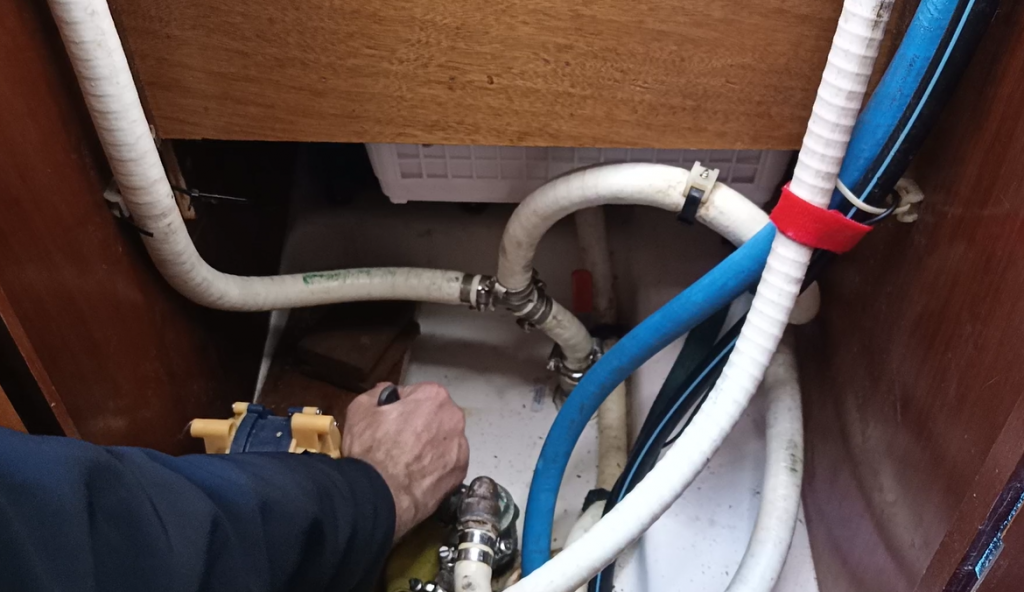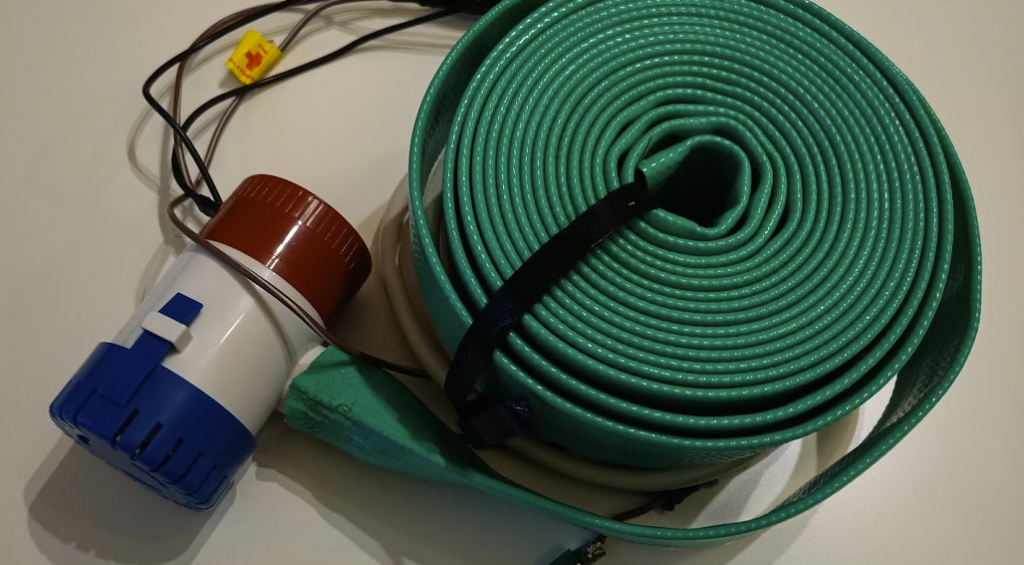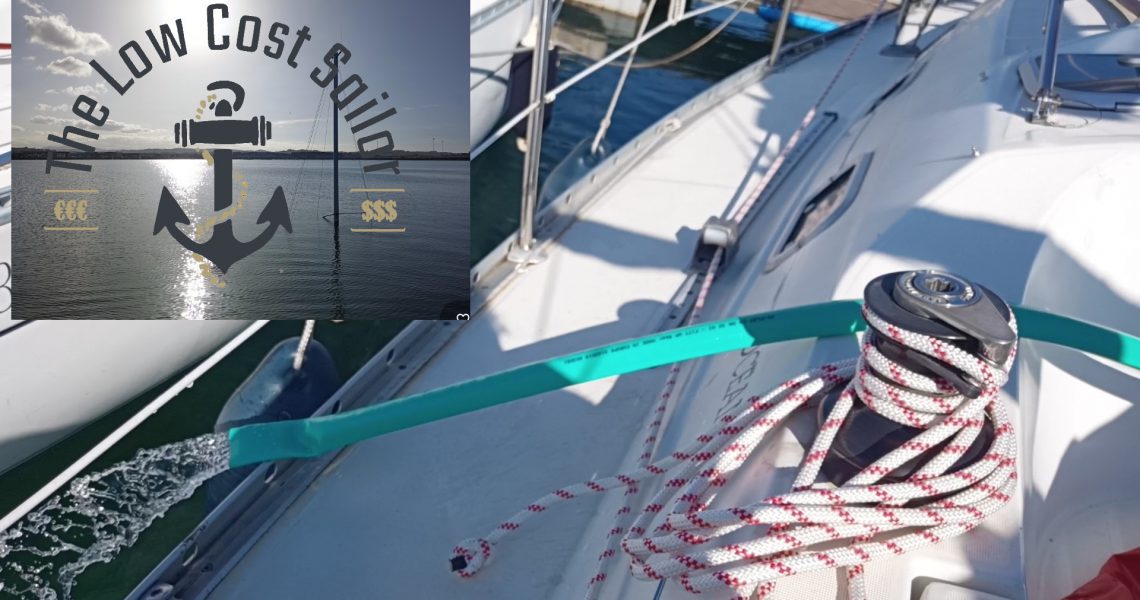How to prevent the boat from sinking part 2. Evacuate water and save time.
Greetings Sailors,
Following the line of our previous post, on how to prevent our boat from sinking, today we are going to focus on saving time and draining water.
We had already said that ships inevitably sink, and that most of the time it is the result of carelessness or little maintenance and, above all, of not knowing that she was sinking.

So in the first post of this saga we learned how to build an alarm system to find out that the ship was sinking.
Well, today we are going to put ourselves in the worst situation … Even though we have taken all the preventive measures, one fine day our boat begins to flood with water …
What should we do? How do we buy time so that she doesn’t sink?
We realize the worst
For some reason, which we still do not know, water begins to enter our boat.
Whether we are at home quietly and thanks to the alarm system that we have built in the previous post we find out that water is entering our boat, or because we are in the boat itself when it happens… This last case much more dangerous , if we are in the middle of the sea …
In any case, the integrity of our ship and ours will depend on what we do from that moment on.
The candidates
Water is entering, it begins to be evident.

If we have not received any impact, the good thing is that the problem is not terrible.
If the water has begun to enter with the engine stopped, the weak points of our boat can be:
- The bottom seacocks, any pipes can have been broken.
- The thru-hulls of any of those seacocks or, let’s not forget, the holes in the sounder or the speed meter.
- The shaft of the propeller (the gland, can be a source of water entry, or even the loss of the shaft that leaves the hole in air, or rather water).

These will be the first points to check and it is very important that you know how to locate and access all of them quickly.
If the engine was running there is an additional possibility, which is that it is spitting the cooling water in. If water has stopped coming out of the exhaust, that is our main possibility.
That is the only case in which the recommendation will be to stop the engine until you have solved it, in any other case it is best to keep it on or even turn it on if it was not.
Finally, if we have received an impact, things can be more complicated and locating the waterleak will take time. Precious time during which water does not stop entering the boat and in which all our efforts, after sending a MayDay will be to try to get out all the water we can, to buy time.
First reactions
Thanks to the fact that you have followed our videos, you will have noticed the presence of water really soon. And whether it is the mobile alert or the alarm that will have sounded while you were sailing, there should be little water, still, inside the boat (even if you were at home and followed the advice in our previous video, you will have an automatic bilge pump, or you will have automated the one you had, as I did when putting the float with the relay and the audible alarm).
So, go through all the seacocks in the boat and, while you are looking for the leak, close them (all except the engine cooling), even if you do not see a leak .. Because if things get worse, your boat may be at some point. sunk enough so that the corresponding drain is already below the waterline and the sinking is accelerated by water also entering there.

If you have been lucky, a seacock, when you close it, may have stopped the leak … if not, you may have located it or not, but the water will continue to enter and it will be a matter of removing it as quickly as possible to keep the leak to line.
Drainage elements
To evacuate the water we will have several options:
- A bilge bucket: it is mandatory and never fails, very efficient at first, but exhaustion makes it inefficient in the long run.
- A manual pump: Also mandatory, very reliable, exhausting without a doubt and also requires your full attention if you are alone .. It can draw up to 45 liters per minute while we are full of energy, but our forces will dwindle fast.
- A permanent electric bilge pump, if possible automatic. You can draw in the order of 20 or 30 liters per minute.. Of course, as the water reaches the height of the batteries of the boat .. it happens to not draw more water…
- Engine cooling pump .. It can get enough liters per minute, and if you are lucky and have an old diesel engine .. Once started, it is very difficult for it to stop, even with the engine almost completely flooded .. So yes A lot of water begins to enter, you can close the cooling seacock, release the water suction hose and the cooling pump will start to work in your favor, absorbing the water from inside the boat and pouring it out through the exhaust. all that while the engine pushes us swiftly towards the nearest port ..
It is clear, we have to take out water as quickly as we can, and any pump will help. So to save time, I am going to tell you how to have an additional pump for emergencies, which will help you save time on your boat or, at one point, to help another who is sinking. And that, in addition, it does not depend on the main battery of the boat.
Purchases
To this end, I have invested less than 15 euros in an additional bilge pump that allows me to extract an additional 70 liters per minute (the equivalent of what enters through a 2.5-centimeter hole below the waterline) and thus save time or even keep the waterway at bay. You can buy it here on AliExpress or you also have it available on Amazon at practically the same price.

To be able to start it, I have additionally bought:
15 meters of hose of the appropriate thickness. I have taken this flat from any DIY store, that is very easy to store compactly and that costs about 20 euros, you will surely have enough left over. And you can also buy it on Amazon.

Another 10 meters of cable, to be able to feed the pump from anywhere, you can add more cable if you want to be able to help others. Although the minimum is the distance from your bilge to some point outside the bathtub where you have a cigarette lighter connector. Something of this style will be enough for you

A cigarette lighter connector (which will make it very easy for me to feed it from any cigarette lighter connector on my ship) and that you can take this from Aliexpress for example, or these from Amazon.

Heat shrink tubing, to protect the connections that may be under water, like this one from Aliexpress or these similar ones on Amazon.

And, very useful and important, this power bank … which is so good for me to charge my laptop, mobile phones, flashlights, or to start the boat’s engine if I run out of battery. And that, in this case, that it has a cigarette lighter connector and allows me to power the water pump even if I have already lost all the electricity on board. You have him on Aliexpress and there are many similar ones on Amazon. This is one of the most useful things I have on the ship.

If you add a small watertight bag for the power bank … already fabulous, because this way you will always have a stored source of energy that will allow you to get out of many graceful situations, like this one from Aliexpress.

Mounting
Well, we already have all the pieces:
Basically the pump, which is the basis of everything, the cable, the hose, the cigarette lighter connector and our power supply.
Also a flange or similar to fit the hose to the pump.
Additionally, some heat shrink sleeves: to keep everything watertight. We will use some heat shrink sleeves in all the cable joints. We will connect everything together, and we have it ready to work, basically the red cable of the pump with the red cable of the cigarette lighter connector through the long cable. You have the details in the video.

Tests
We have to take out water at full speed … (well, with a cloth it will take a long time).
If we have a crew on board we will use everything we have:
Someone flushing, people hitting the hand pump, our automatic pump running .. and we’ll add our emergency pump ..
With everything working at full capacity, we can be getting: 20 + 45 + 30 + 30 + 70 = 195 liters per minute, the equivalent of a 4-centimeter hole, which will be the fattest through-hull that we have on board. The hole must be very big for us to sink .. And if it is, we will be saving precious minutes to find the waterway and cover it ..
In the attached video you have a good comparison of the operation of each system.
And, especially if we are alone, the emergency pump is going to be a fundamental part of our ability to buy time.
The power bank guarantees us more than one hour of our emergency pump (that’s more than 4000 liters of water) and allows us to even go to help others (Today for you, tomorrow for me).
So, with a little more time available, we only have to plug and fix the waterway.
But that will be in another post, in which we will tell you the best tricks to plug a waterway.
